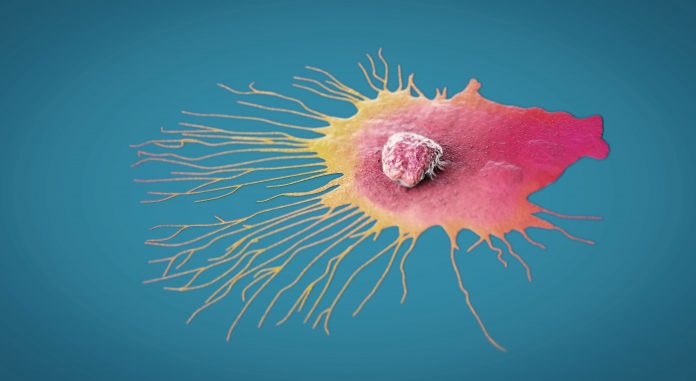
Studies from Emory University reveal how treatment with chemotherapy may awaken breast cancer cells from dormancy and trigger renewed growth. The research describes the mechanisms involved—the release of two cell-signaling cytokines—and how blocking these targets prevented awakening from dormancy. The findings published in PLOS Biology show for the first time that chemotherapy awakens dormant cancer cells by means of stromal injury response without affecting cancer cells directly.
During breast cancer treatment, some cells enter a state of cancer dormancy, meaning they neither die nor grow. Instead, they stop dividing and become resistant to chemotherapies. Recurrence occurs when dormant cells re-awaken and start dividing again.
“Cancer dormancy is not a widely studied field,” says Ramya Ganesan, PhD, first author of the paper, and former postdoctoral fellow in the lab of Vikas Sukhatme, senior author. One reason is that it’s difficult to detect dormant cancer cells in the body and there are few models available to study it.
Some studies have indicated that chemotherapy itself may promote escape from dormancy, but the mechanism of this effect has not been clear. To further explore the concept that chemotherapy might be acting as an injury response on dormant tumors, the research team used a 3D model that replicates the tumor microenvironment—including breast cancer cells plus non-cancer stromal cells (e.g. fibroblasts and endothelial cells) found in breast tissue.
The team administered the chemotherapy drug docetaxel, a standard of care taxane chemotherapy in breast cancer treatment, at physiologically relevant concentrations, and found that even at very low doses, stromal cells succumbed to chemotherapy but dormant cells did not. Instead, the treatment induced cell-cycle reentry in cancer cells.
“We saw that the cancer cells which had not responded to chemotherapy started growing,” adds Ganesan, which led them to tease apart the results and find out the underlying mechanism. “It was not a direct effect of chemotherapy on cancer cells but an indirect effect wherein chemotherapy was killing the stromal cells, which were now releasing a bunch of factors that cause the cancer cells to now be awakened and start proliferating.”
The driver of this reawakening of dormant cells was release of two key cell signaling molecules, granulocyte colony stimulating factor (G-CSF) and interleukin-6 (IL-6) by the injured stromal cells, which acted on the dormant cells to promote their growth, both in vitro and in vivo.
Researchers have known for years that IL-6 and G-CSF are pro-tumor factors. “But until this study, they have not been studied from the cancer dormancy perspective,” adds Ganesan. “No one had previously seen that chemotherapy itself could do this to stromal cells and awaken the cancer cells out of dormancy.” This finding highlights the importance of surrounding cells, not just the cancer cells themselves, in determining the response to chemotherapy. It also suggests a possible mechanistic foundation for the observation that high serum levels of IL-6 are associated with early recurrence in breast cancer patients receiving chemotherapy,
Given this finding, the team wanted to see if a prophylactic therapy could prevent this IL-6- or G-CSF-mediated cancer dormancy escape. In the paper, they showed that antibodies that neutralized either G-CSF or IL-6, inhibited awakening from dormancy due to docetaxel treatment. They also found that blocking the ERK-MEK cytokine signaling pathway with selumetinib, a clinically-approved MEK inhibitor, provided the same result.
“This suggests the possibility of a new treatment approach: giving a MEK inhibitor prior to or with docetaxel to prevent cancer dormancy escape, “ says Ganesan.













